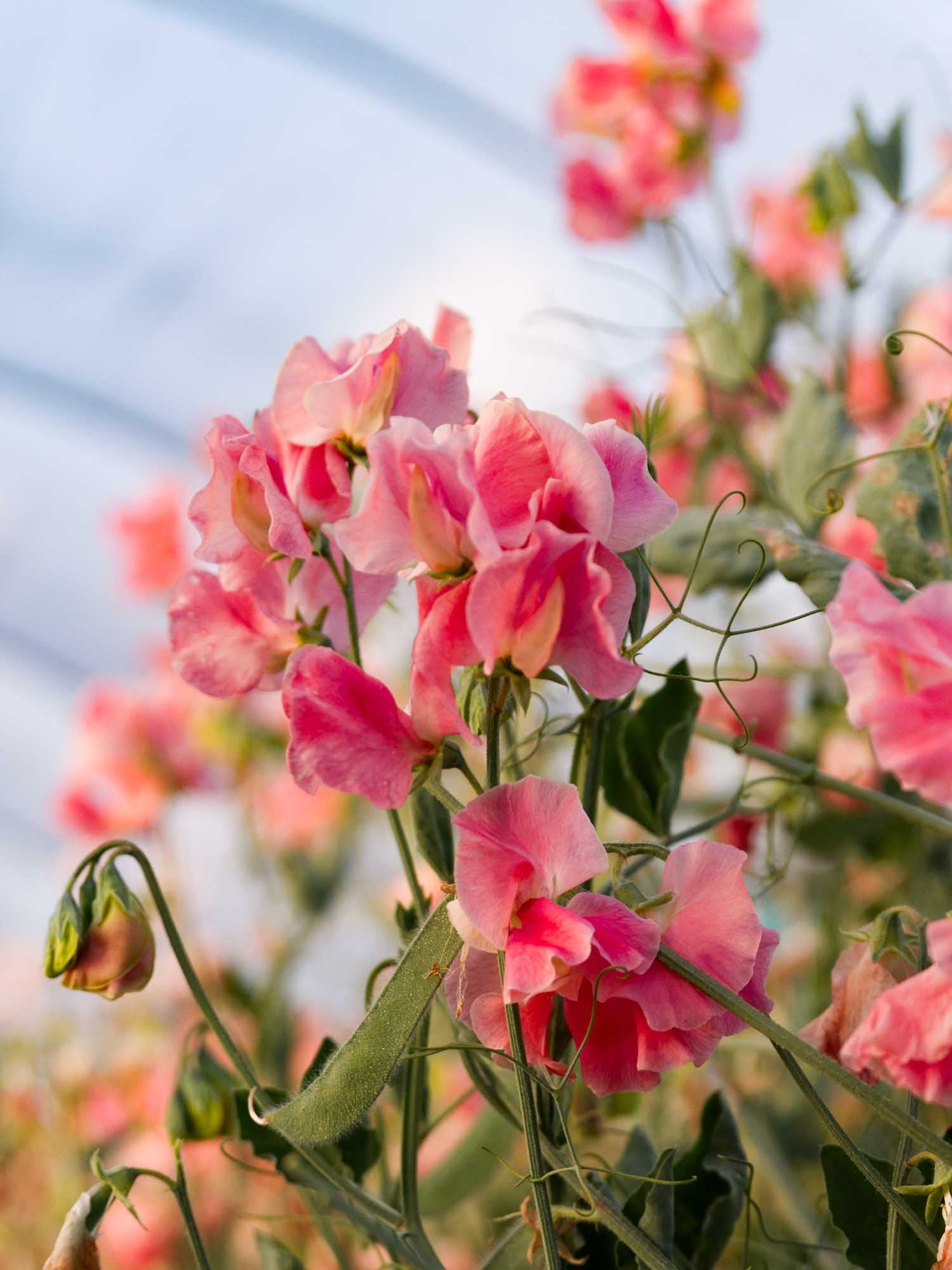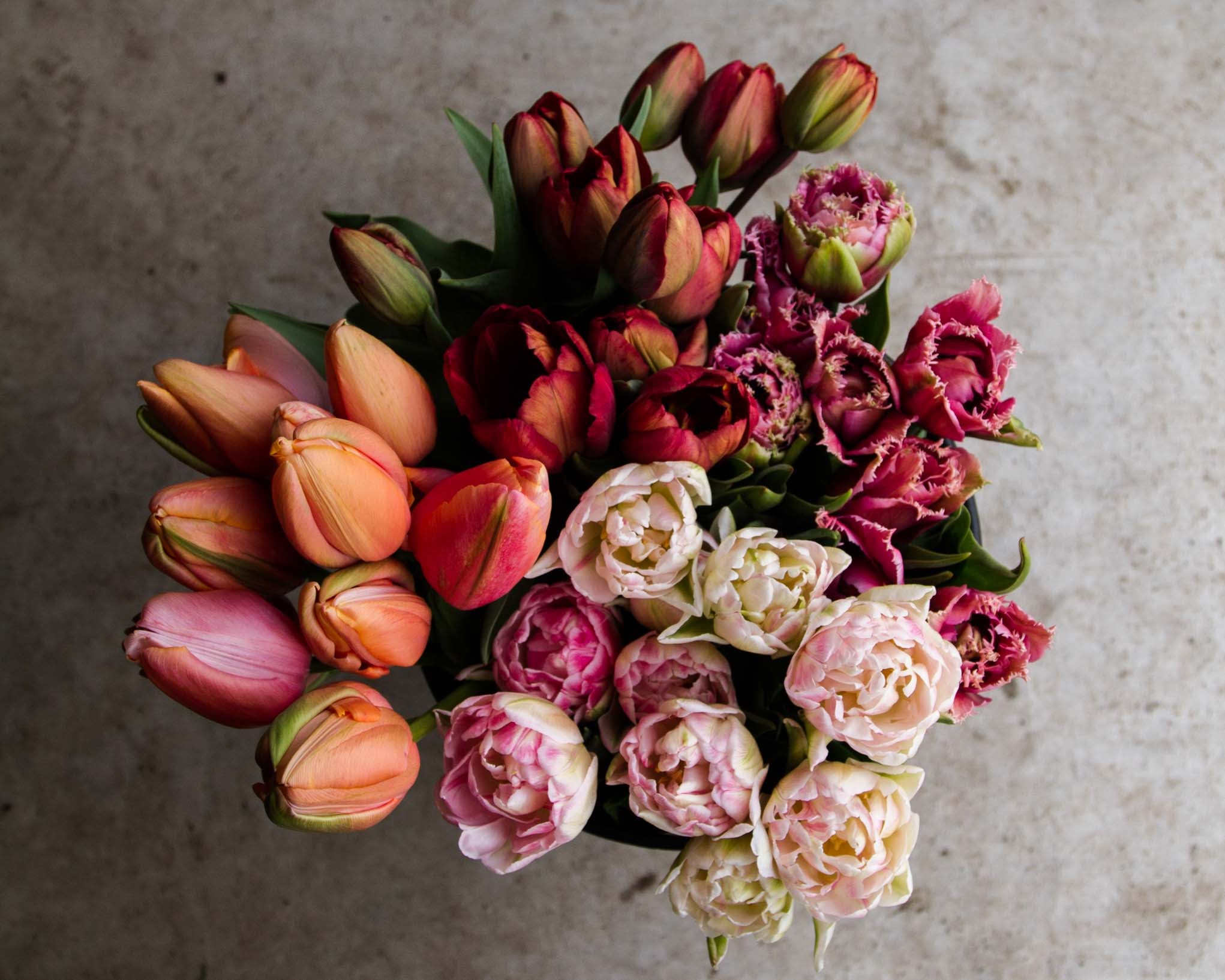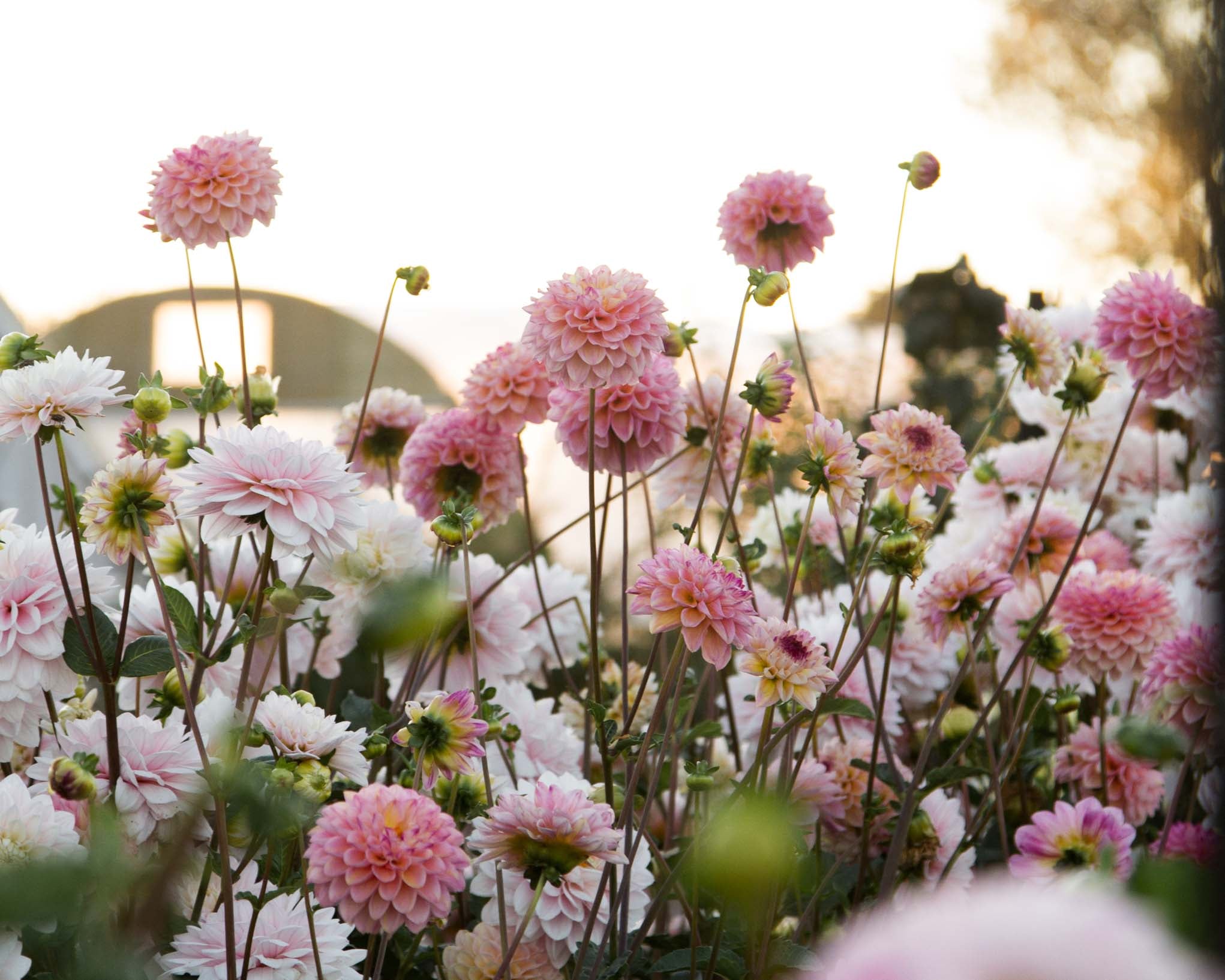Learning to Grow Ranuncs from Seed(lings)
Due to recent import requirement changes NZ growers now face a unique and challenging learning curve to learn to grow ranunculus from seed vs the traditional (easier) universal standard of growing from professionally produced corms.
For growing tips see our How to Grow Ranuncs Guide
SEED VS CORMS - WHAT’S THE DIFFERENCE?
All ranunculus seedlings produce corms (claw like bulbs/tubers), but not all corms are produced from seed. Ranunculus are typically propagated two ways and grown on for a year to produce corms which are how they’re typically traded/sold as.
The most common method of propagation is via seed and as all seed grown plants this comes with varying degrees of slight genetic variation within each cultivar/variety, but with typical pollination, breeding and isolation, unique varieties can be bred & produced. Some breeders also work towards producing/finding the best of the best individual plants and then propagate them en masse via tissue culture to produce uniform clones for improved reliable cut-flower production. Both seed & tissue culture methods produce corms after growing on for a year ready for selling to growers.

HOW IT USED TO BE
Most of the special cut-flower ranunculus breeding and corm production are from Italy, France, Israel, USA (& Japan though they’re not typically commercially available outside of Japan), and as such all of the corms available in NZ have typically always been imported.
WHAT CHANGED AND WHY WE NOW HAVE TO LEARN TO GROW FROM SEED
In 2013–17 a bacteria called Xylella fastidiosa started affecting olive trees in Italy and spreading around parts of Europe severely affecting plants to the point of death (it stopped the flow of water through the plants effectively causing severe drought-like symptoms despite the lack of drought conditions), even killing groves of century old olive trees. Xylella has a wide range of hosts, some symptomatic (like grapes & olives) and others mostly asymptomatic carriers and unfortunately ranunculus are one of those carrier species.
So in 2017 to prevent the introduction of the bacteria and the potential damages to our vineyards and other potentially affected horticultural industries (and possibly any native species potentially affected) MPI updated the import requirements effectively banning the importation of all species known to be hosts/affected by the bacteria from all countries known to have the bacteria (it’s technically possible to import and have them quarantined and tested for the bacteria - but that would be outrageously expensive and totally impractical in the case of ranunculus corm importation).
Because Australia & South Africa are known to be free from xylella, it is still possible to import corms from them as before, but they do not produce any of the special cut-flower ranunculus varieties (just the bog standard colour range of garden/poppy style single/double varieties).
Through this NZ has been effectively cut off from all the best ranunculus varieties available in the world, but thankfully we are still able to import ranunculus seeds (as they’re not known to be carriers of the bacteria), and while all the cloned corm only varieties are out of our reach, the Italian Elegance & French Amandine series are some of the best series of ranunculus in the world and they’re all propagated via seed! Yay!

THE CHALLENGES OF LEARNING TO GROW RANUNCS FROM SEED
So after figuring out that I could import ranunc seeds, it’s proven to be a complete steep learning curve to learn how to grow them successfully. Because the rest of the world doesn’t have to resort to growing them from seed themselves, when the much more productive corms are easily and cost-effectively available, there is little to no information around the place to learn the unique intricacies of seed grown ranunculus. And as amazing the international breeders are, sharing such information isn’t something that they offer.
The most challenging aspect of growing from seed is getting them started. Ranunculus resent warm temps (20ºC+), but need a long cool growing season to get established to produce their best flowers (but not too cool as they also aren’t too thrilled with freezing temps either). So they need to be sown as early in autumn/late summer as possible and babied through the heat, until the autumn/winter chill finally sets in so they can slowly grow through winter ready to flower in spring (sept-oct depending on climate/planting time etc).
Seed grown ranunculus can produce just as big and high quality flowers as corm grown ranuncs, they just take a lot longer to grow enough foliage to sustain such flowers and then don’t have time to produce a fraction as many stems per plant before our temps get too warm in spring and they start dying down.
Technically it is possible to save the seed grown corms at the end of the season, but mastering that whole process is an even steeper learning curve than learning to get them started. If they’re happy the corms grown in their first year from seeds could be save-able and then replanted and then divisible by the next season (into about 3+ corms-ish), and so on into future years, but due to our humidity and wet summers in NZ (Taranaki especially) it isn’t as easily successful as it is in drier mediterranean summer climates.
Ranunculus aren’t necessarily the easiest flower to grow even from corm, and having to grow from seed is more challenging again, and less productive for commercial cut-flower growing (aka the cost of producing high quality ranunculus in NZ means they have to sell at a premium price for growers have any hope of making a profit on them). But their layers upon dreamy layers of petals make everything worth it every single time!!

These seed grown ranuncs above are about 3-4 months old from when they were sown vs these ranuncs from saved corms which were presprouted about 2 months prior aka corm plants grow a lot bigger a lot faster than seed grown plants:

These ranuncs were kinda tiny, but you get the idea of how they can be divided after two years from seed sowing:
 |
 |
 |
First year corms from seed - some varieties produce bigger/better corms than others:
Late ranuncs, while still flowering and beautiful do not produce as big a plant, with smaller shorter and less flowers:





13 comments
HEIDI: I think it’d be worth trying to sow both. You never know what you can get away with unless you give it a go!
EMERDEN —
Great article. I’ll give it a go this summer. Would seeds gathered last summer be fine. I kept them at room temperature because I didn’t think of putting them in the fridge. Or should I use seeds saved this summer? Thanks.
Heidi —
Thanks for the info.I am in Perth Western Australia and collected seed from last year’s ranunculus ,kept them in the fridge then planted them out in the end of May which was still warm here.I had a pretty good strike rate but they are still very small plants.Not sure if they will get big enough to flower.The seed came from the salmon Italian ranunculus so it will be I interesting to see how they turn out.good luck to you
Angela Goodhue —
LEROY – Ranunculus definitely aren’t the easiest to grow from seed (that’s why we only sell plants instead of seeds, so we don’t set everyone up to fail!). I am having another go from seeds this year myself, but from previous attempts they’re typically not too difficult to germinate. The tricky part is timing and growing them on after germinating. They are quite slow from seed, and hate the heat, so in order to get them to flower before the spring heat takes them out, they need to be started as early as possible, which pushes them back into needing to be sown in late summer, early autumn when it’s still too warm for them to flourish.
MEGAN – I’m working on it! We took a bunch of photos when we saved them this season, so now I just need to make sure to document our sprouting when we get to them this autumn and then put it all together – good winter project I’m thinking!
We’re working on working out if it’s more varietal on corm size or more timing, it’s probably a combination of both. Earlier plantings definitely have more time to produce larger corms, than later plantings, and I do feel like different varieties are better at producing better corms than others.
Sarah @ EMERDEN —
I ordered some ranunuculus and I received a very small package of seeds. I thought I was getting
the corms. How difficult is it to get the seeds to sprout.I haven’t had any luck in the past.
Leroy Anderson —
Super interesting! Was wondering myself how to get larger corms from smaller ones, assuming it’s not just a variety that makes bigger corms. So I was fascinated to come across this. I am curious to know your process with drying and saving the corms. Good luck with your project!
Meghan Murphy —
I had the most beautiful Ranunculus this year 2022. I live in south Africa I planted in July and they flowered up to end September beautiful long stemed vibrant colors my anemones were just as beautiful
Laura —
Great work! Keep it coming – so informative.
leigh —
Thank you so much for all of this engaging and informative knowledge! I am curious to know if the ranunculus propagation would thrive in the Otago region. The climate down here is far cooler and drier than the North Island. Peonies are another flower that thrive here because of the southern climate.
Grace Parkes —
Wow so informative ! I’m in Australia and grow ranunculus as they are my favorite flower. Can’t tell you how nice it is to read a flower growing article from the southern hemisphere ! Thank you :)
Liz —
A very interesting article Sarah, just love ranunculus, such gorgeous colours, can’t wait for your plants to become available
Helen Saunders —
Love this!! I’ve been so envious of the products available overseas and never taken a moment to consider why they’re here. I started a small cutting garden alongside my wedding flower business and always dreamed of some big flirty Ranunculus…. Thanks for sharing ❤️
Jess —
Hi
Very interesting! I wondered why only basic “primary colour” ranuncs are available, whereas previously have been gorgeous blends of picotee shades.
I am very keen to acquire either corms or seed of picotee or any other antique look ranuncs!
Thanks,
Jane
Tel 021121814
Jane Wylie —